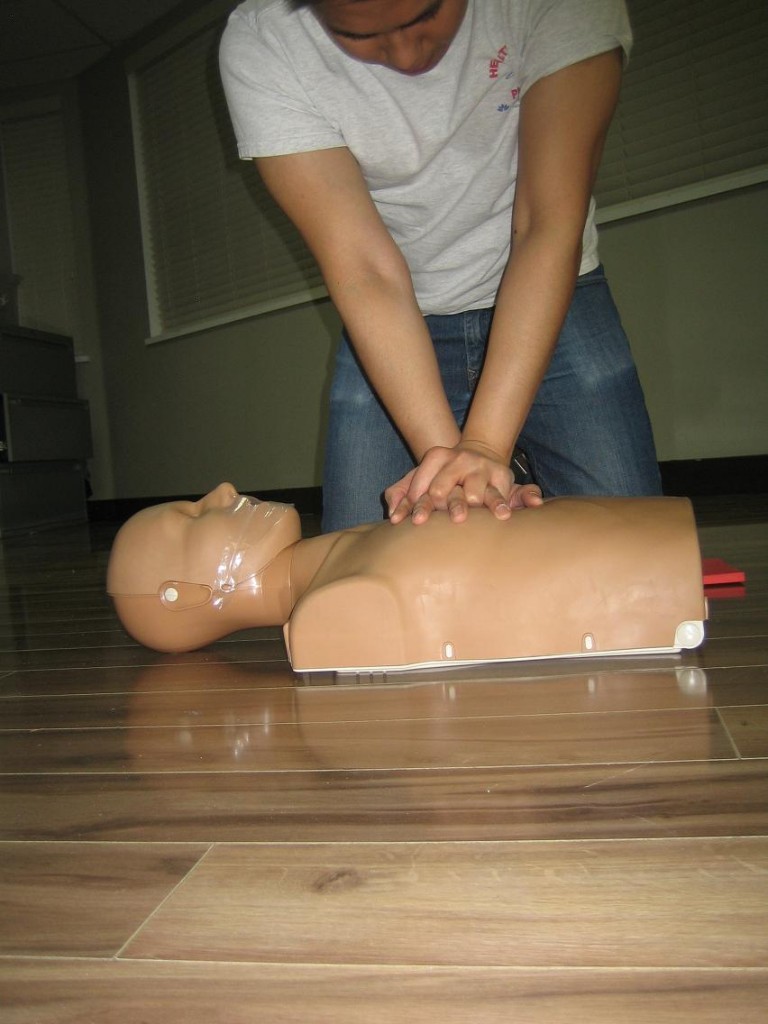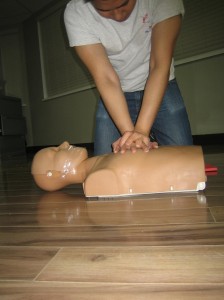There are basic steps that we are all aware of when it comes to managing common injuries, and then there are first aid skills that make the difference between life and death. It is interesting to note that saving lives really begins in the mind, and until you are confident to do it, it may be a futile attempt, often with devastating consequences. The best thing, perhaps, is the fact that all of the skills mentioned below do not require additional tools except the mental faculties, your hands and a sense of urgency. Let us look at each of these skills and discuss them briefly.
The material posted on this page on basic first aid skills is for learning purposes only. To learn basic first aid and CPR register for a training program with one of our providers.
[youtube url=”https://www.youtube.com/watch?v=m2upeVCInQo” width=”220″]- CPR. Arguably the most popular first aid skill, CPR (cardiac pulmonary resuscitation) is a technique that allows the first aider to continue pumping blood through the victim’s body when they cannot breathe on their own, and the heart has acquired a haphazard rhythm. This condition is known as a cardiac arrest and must be handled with immediate skill due to the neurologic risks that it poses if this is not done swiftly.
CPR training is part on any basic first aid program. This is what makes CPR one of the must-have first aid skills
- Knowledge of how to treat a choking infant is imperative to survival and proper baby care. This is for the obvious reason that infants love to explore their immediate surroundings, and with this comes putting items in one’s mouth. Even when this does not happen, there is the likelihood of choking on large pieces of food during weaning. Having these skills at hand will make a big difference and could actually save the child.
- How to stop bleeding. This is achieved in two ways: by applying pressure as well as by creating an elevated position. The ability to stop bleeding makes it easy to control the improvement of the victim.
- Shock treatment is a fundamental aspect of first aid skills, partly because it is also relatively common. The good news is that when you are able to control bleeding, keep the patient relaxed and calm, you are better able to address any issues that arise from shock.
- It is important for a first aider to know what steps they need to make in order to treat low blood sugar. Low blood sugar is just as dangerous as low blood pressure (hypotension). Ideally, diabetics ought to have their diagnostic details indicated with them. This is not always the case, making this one of the most vital first aid skills.
- Treatment of temperature extremes. These include heat strokes and hypothermia. Both situations cause fluctuations in the normal functioning of the body’s internal system. The difference between the two arises from the fact that while the signs of a heat stroke, hypothermia may not be so easy to pick up unless you are very keen. For this reason, looking out for the signs of hypothermia makes it among key first aid skills.
When registering for first aid training, check to see some of the modules that are covered in the course to learn these basic skills.


